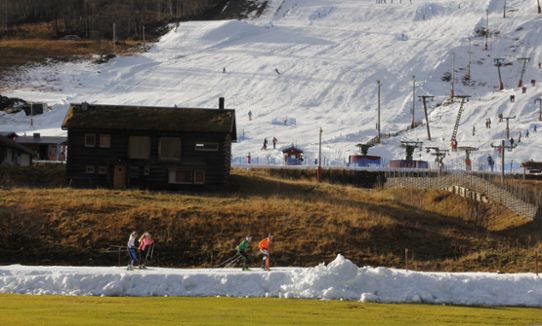After three seasons of unreliable snow conditions and very variable weather, Ramundberget Alpina AB decided to invest in snow cannons. Their investment has resulted in a longer winter season and more visitors. The first skiers were able to enjoy Ramundberget’s slopes and a cross-country ski trail during the autumn holiday week.
Before the arrival of the snow cannons, the season used to start early in December. With the new investment, the first skiers can enjoy the slopes and trails as early as October.

The resort has managed without snow cannons since it started up in 1958, but no longer feels it can rely on natural snow.
Reliable winter season
The resort is adapting to the prevailing conditions and the future climate. After many years discussing, thinking and planning, the resort decided to invest in 173 snow cannons. The snow cannons went into action for the first time that same 2012-2013 winter season producing artificial snow for the ski slopes. As a result, the resort is able to offer a longer, more reliable winter season, thereby attracting more visitors.
Managing with a smaller amount of snow also means the resort has to undertake a substantial amount of work every summer clearing vegetation.
Financing
The cost of constructing the pump housing and purchasing the snow cannons was SEK 15 million. Ramundberget Alpina AB was responsible for the majority of the costs itself but also received funding for the project from the County Administrative Board and the EU. The cost of applying for a water permit enabling them to draw water from a nearby river came to around SEK 300,000, and the annual cost of vegetation clearance is about SEK 40,000-50,000.
More examples of climate adaptation
This is one of many examples of climate adaptation. There are more in the collection of ideas being built up by the Swedish National Knowledge Centre for Climate Change Adaptation at the Swedish Meteorological and Hydrological Institute (SMHI). The collection of examples has the aim of sharing experiences and providing ideas to everyone who works with climate adaptation. Examples describe concrete measures and challenges in several subject areas. They show how different actors have worked to adapt their activities to the climate changes that are already being noticed today and those that we cannot prevent in the future.